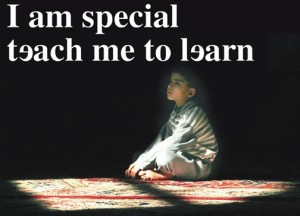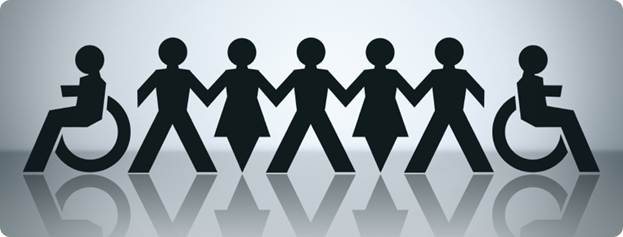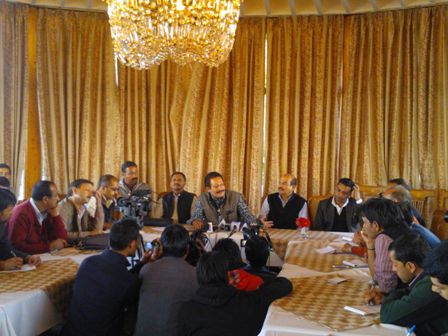International Literacy Day was first celebrated on September 9, 1996 after it was proclaimed by UNESCO, to remind international communities of the importance of individual and community literacy. However, for aspirant students with disabilities 1995-96 proved exceptionally momentous as the Indian government enacted the Persons with Disability Act in 1995. A clause under this act made it imperative for educational institutes to take steps towards inclusive education, laying great emphasis on the equality and rightful treatment of people with disabilities.
While this act demanded that children with disabilities be given an equal opportunity to join and pursue studies in mainstream educational institutes, statistics note that 9/10th of disabled children in India still find themselves excluded, although it has been 17 years since.
Putting this into perspective means that 90% of the estimated 40 million children with disabilities in India are unable to pursue even primary education. The root cause of the problem is multifarious.
First is the lack of specialised teachers in mainstream schools. These teachers would conventionally have a B.Ed. in Special Education, having been trained to address the problems that a student with a mental or physical disability might face while pursuing an educational course along with children without disabilities.
Schools are unwilling to make the initial expenditure associated with integration of disabled students in mainstream education. Although in 1974 the Ministry of Welfare, Central Government of India initiated the Integrated Education of Disabled Children (IEDC) program, providing financial support to assist schools provide disabled students uniforms, transportation, and special equipment.
The scheme was largely a failure due to shortcomings in its administration and implementation. Furthermore, even after its revision in 1992, under which 100% assistance became available to schools offering such students with ‘integrated’ education, the scheme wasn’t able to achieve its intended success.

The obvious reason for this being that the ratio of students suffering from physical or mental disabilities to the number of students without disabilities is lopsided in the favour of latter. Thus, for mainstream schools, the salaries of the teachers with specialised B.Ed. could come across as an unnecessary expense, especially when it would be easier for these schools to just give those classroom vacancies to students without disabilities instead.
Mainstream schools have adopted the simpler way out by insisting that children with special needs find educational institutes that cater to their specific needs. This remains the situation, despite the fact that it limits the educational opportunities available to disabled students.
However for the integration of these individuals into society is remains essential that they be offered the chance to study in mainstream schools even if it means that the school needs to hire specialized teachers and host additional classes for these students. This issue should be contemplated with the same levelheadedness with which extra tutorials are held for students falling behind their peers in math. The argument is simple; if a student weak in a subject can be tutored additionally so can disabled students be provided additional help.
Moreover, what educational institutes don’t realise is that in India a large number of students on their attendance roll unknowingly suffer from varying levels of mental or physical disabilities as many of these disabilities are not easily identifiable and awareness about them is lacking in the educational circuits.
Take for instance dyslexia, a learning disability. Statistics indicate that in India about 10% of the children in a regular classroom are dyslexic, however only a few of them are able to identify their problem. Furthermore, different students experience dyslexia differently. It is wrong to assume that dyslexia is as simple as a math formula although some symptoms might be common to all those who suffer from it.
Just as our schools don’t seem to care for the disabled students, they don’t pay much attention to the training of teachers for such children either. A school willing to hire faculty for disabled students might find themselves stumped. The problem is that courses in India offering B.Ed. in Special Education also tend to club all the various types of disabilities under one umbrella. Only few institutes such as National Centre For disability Studies, Indira Gandhi National Open University (IGNOU) in Delhi,realise that educational expertise of teachers working with different types of mental and physical disabilities differ from one another.
With reputed mainstream schools racing to score higher marks and thus focusing only on granting admission to those they deem mentally and physical fit, and the lack of decisive action by the government to oppose such educational practices, the question remains whether inclusive education for the disabled in India is to remain a myth.




There is no doubt that inclusive education for the disabled in India remains a myth .Whether it remains a myth in future or not , will depend on all of us who need to think and take action .To my mind , there are three real issues as follows:
1.Clarity of thought and attitudes:We should have a clarity of thought and attitudes that true education has to be inclusive .This needs to be built in all our public policies related to education as well as other sectors.
2.Inclusive education does need extra expenditure per student .This extra expenditure is required for infrastucture like ramps and other such essential facilities,special techers in larger numbers, special learning materials etc.There has to be either a subsidy or other methods so that institutions incur this expenditure and still remain financiaklly viable .
3.The responsibility of ensuring inclusive education effectively must , with out any doubt , lie with Ministry of Human Resource Development and not with Ministry of Social Justice / Disbility .At present , it is no0 body’s baby .It is an orphan , very unfortunately .
I congratulate and thank the author for raising the issue very effectively
please do contact me…. and do keep in tocuh more on disability and women’s rights issues